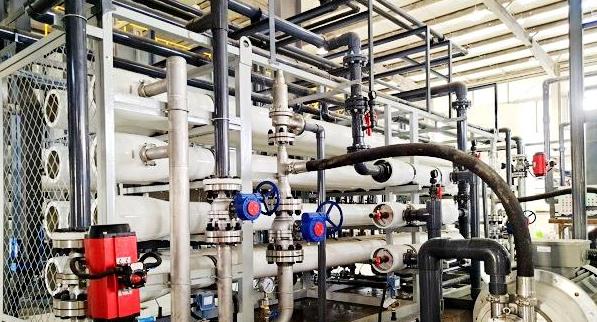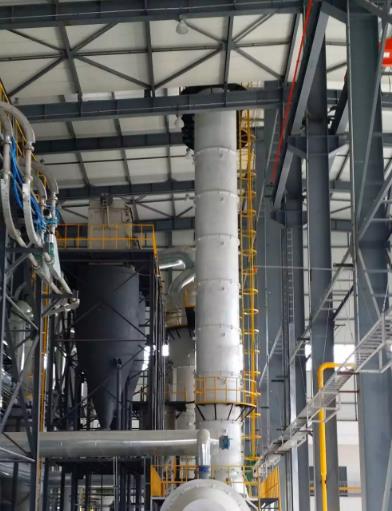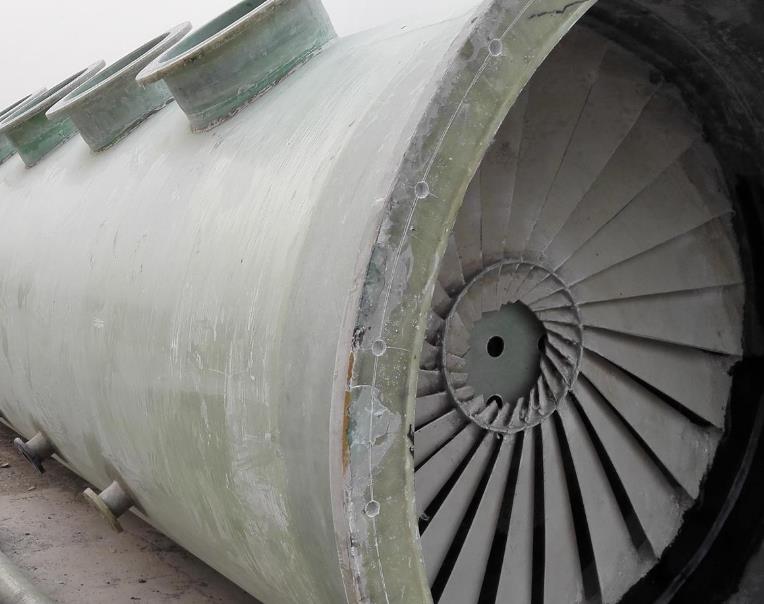In this paper, a zero-emission technology of by-pass flue gas evaporation for desulphurization wastewater of small units is introduced. Spray drying is used as the theoretical basis. This process has low cost and operation cost, and has great advantages for small unit projects.

Principle of spray drying
Spray drying is a drying process in which the raw material liquid is dispersed into droplets by an atomizer, and the powder granular product is obtained by direct contact between hot air (or other gases) and the droplets. The raw material liquid can be a solution, emulsion or suspension, or a molten liquid or paste.Composition and process of spray drying
System flow:
System composition:
According to different materials or different product requirements, the designed spray drying system is also different, but the main basic units of the spray drying system remain unchanged, FIG. 1 (for the basic process of the spray dryer, several of the main systems are indispensable.
Feed system
The feeding system is to smoothly transport the material liquid to the atomizer, and to ensure its normal atomization, according to the form of the atomizer and the nature of the material is different, the feeding method is different, the commonly used feeding pump has screw pump, metering pump, diaphragm pump, etc., for the air flow atomizer, in the feeding at the same time also provide compressed air to meet the energy required for liquid atomization. In addition to the feed pump is also equipped with an air compressor.
Heating system
The heating system is to provide enough heat for drying, with the air as the heat carrier transported to the dryer, the selection of the form of the heating system is also related to many factors, the most important factor is the nature of the feed liquid and the needs of the product, the heating equipment mainly has two forms of direct heating and heat exchange. The fan is also part of this system.Atomization system
Atomization system is the core of the entire drying system, the atomizer in the atomization system is the most studied content of drying experts from theory to structure, and there are three basic forms commonly used at present: centrifugal - centrifugal force generated by mechanical high-speed rotation as the main atomization power; Pressure type -- the high pressure generated by the feed pump is the main atomizing power, and the pressure energy is converted into kinetic energy; Air flow -- the kinetic energy generated by high-speed air flow is the main atomizing power, and the adaptability of the three atomizers to the material liquid has certain differences in the particle size of different products.Drying system
The drying system is a variety of different forms of dryers, the form of the dryer depends on the form of the atomizer to a certain extent, and is also the main content of the spray drying design.Gas-solid separation system
The droplets are dried to remove the water (it should be said that most of the water) after the formation of a powder granular product, part of the drying tower and gas separation at the bottom of the discharge dryer (tower bottom discharge type), another part with the tail gas into the gas-solid separation system need to be further separated, gas-solid separation is mainly dry separation and wet separation two types.Application of spray drying in the treatment of desulphurization wastewater
Desulphurization wastewater, as a high brine, generally adopts the process of softening, membrane filtration, evaporation and crystallization, and water reuse, which has high cost and operation cost (can refer to the previous article, click to jump). This paper introduces a zero emission technology of desulphurization wastewater bypass gas evaporation for small units, using spray drying as the theoretical basis. This process has low cost and operation cost, and has great advantages for small unit projects. The following describes the technology of spray drying desulfurization wastewater.

zero discharge:
Principle: Spray drying technology is used to treat dry desulphurization wastewater by evaporation in spray drying technology, so that the desulphurization wastewater forms steam with the flue gas, and the solid form dust is captured in the dust collector to achieve zero discharge of wastewater. The main difference with the traditional drying technology is that this technology uses the evaporation function, rather than to obtain a solid particle product.
Process: The flue is led out from the SCR's clean flue side, and the high temperature flue above 350℃ is introduced into the drying tower. The desulfurization wastewater containing 1%-3% solids is transported by pump to the atomizer (spray gun or centrifugal atomizer) at the top of the tower. The desulfurization wastewater is atomized into micron small particles under the action of the atomizer. The water in the droplets evaporates, and the solid particles form dust, which is discharged from the drying tower together with the cooled flue gas into the main flue before the dust collector, and mixed with the flue gas at the outlet of the air preheater into the dust collector, and the dust is captured in the dust collector.
Main system equipment: slurry conveying pump, atomizer, flue gas baffle door, inlet flue, drying tower, outlet flue, etc.


